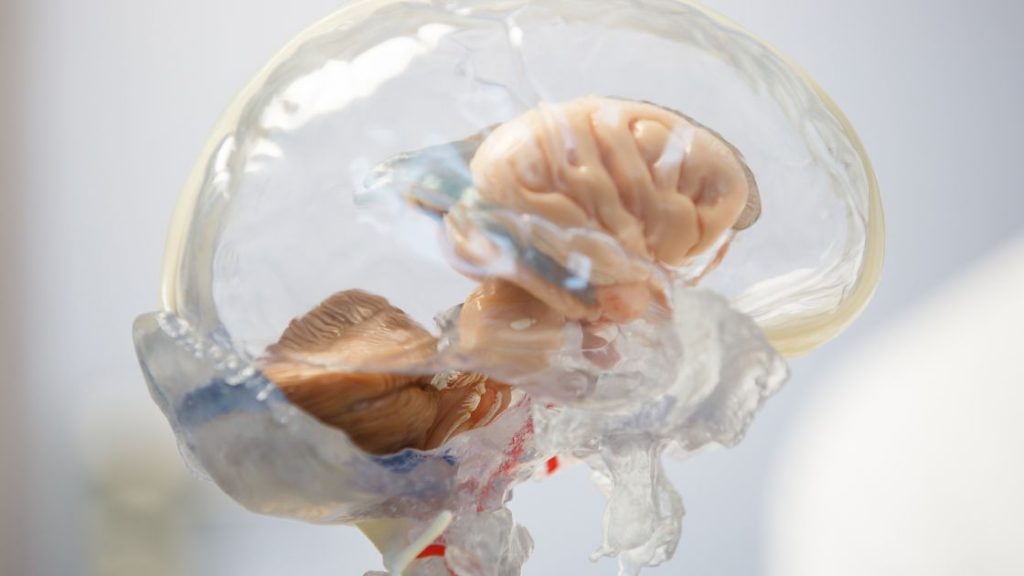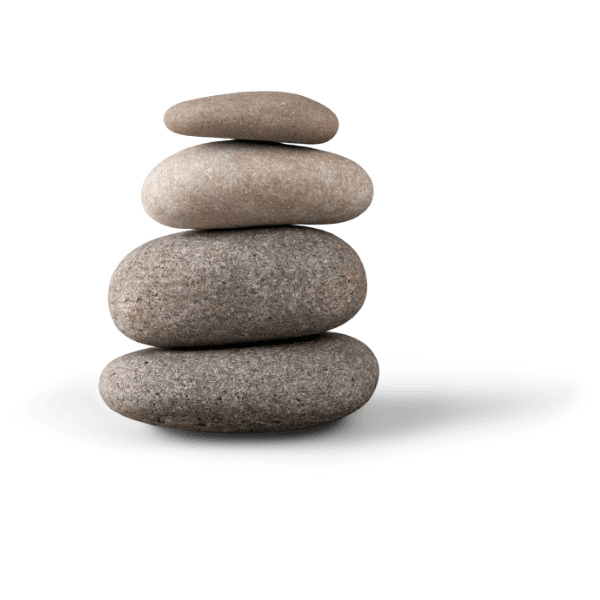Welcome to the world of Craniosacral Therapy (CST), a gentle and transformative hands-on technique that can work wonders for your body and mind. Through a light touch and precise examination of the membranes and fluid movement in and around your central nervous system, CST aims to relieve tension, promote well-being, eliminate pain, and enhance your overall health and immunity.
Summary of Key Points:
– Craniosacral Therapy (CST) is a gentle hands-on technique that examines the membranes and fluid movement in and around the central nervous system. It focuses on relieving tension to promote well-being, eliminate pain, and boost health and immunity.
– CST recognizes the interconnection of the body’s systems, working with the body’s connective tissue known as “fascia.”
– Fascia, a network that covers organs, glands, nerves, muscles, blood vessels, brain, and spinal cord, plays a crucial role in CST.
– By addressing imbalances in the central nervous system, CST aims to restore balance, self-regulation, self-correction, and self-healing.
– CST can provide relief for various conditions such as chronic pain, migraines, fibromyalgia, and neurological disorders.
– During a CST session, you can expect a consultation to identify troubled areas, followed by a treatment where you remain fully clothed.
– Soft music and low lighting create a relaxing atmosphere during the session.
– Skilled therapists use gentle pressure techniques to assess your fascial system and promote natural stress relief and improved organ and muscle function.
– CST is generally safe and beneficial for most individuals, but certain conditions may require consultation with both a CST practitioner and a physician.
– Conditions such as recent concussions, cerebral swelling, structural defects in the cerebellum, brain aneurysms, traumatic brain injuries, blood clots, and disorders affecting cerebral fluid pressure, flow, or build-up need careful consideration.
– Consultation with healthcare professionals ensures personalized guidance on the suitability of CST for individual circumstances.
Craniosacral Therapy offers a holistic approach to wellness, allowing your body’s natural healing potential to flourish. By addressing imbalances and promoting harmony within your central nervous system, CST can lead you on a path to profound well-being and improved quality of life.
What is a craniosacral therapy (CST)?
Cranic -Sacral Therapy (CST) provides gentle, hands-on treatment which can help with various ailments such as headaches, neck pain or cancer-related side effects. CST utilizes light touch to study the cellular membrane and fluid movement within and around the nervous system.

Exploring the Power of CST
Now, let’s dive into the fascinating details of this incredible therapy called craniosacral therapy (CST). CST takes a unique approach by using a gentle touch to examine and work with your body’s connective tissue, also known as “fascia.” Think of fascia as a vast network that covers and intertwines with organs, glands, nerves, muscles, blood vessels, and yes, even your brain and spinal cord. It’s an intricate web that permeates throughout your entire body, reaching every nook and cranny.
The fundamental principle behind CST is the belief that your body operates as a unified system, interconnected at all levels. By addressing the tension and imbalances within your central nervous system, which includes your brain and spinal cord, CST aims to restore harmony and promote optimal functioning. When tension builds up in the central nervous system, it can have far-reaching effects, causing discomfort, and pain, and hindering your overall well-being.
Through the gentle touch and precise techniques employed during CST sessions, skilled practitioners aim to release the accumulated tension and restrictions in your fascial system. By doing so, they create a pathway for your body to regain its natural state of balance and self-regulation. As the tension dissipates, your body’s innate healing mechanisms kick into gear, allowing for improved self-correction, self-healing, and enhanced overall health.
The benefits of CST extend beyond mere pain relief. Many individuals who have undergone CST report experiencing a profound sense of well-being. By restoring the balance in your central nervous system, CST can have a positive impact on your physical, mental, and emotional state. It’s not uncommon for people to describe feelings of deep relaxation, inner calm, and a heightened sense of vitality after a session.
Furthermore, by promoting the optimal functioning of your central nervous system, CST can potentially bolster your immune system. A healthy and well-regulated central nervous system facilitates efficient communication between different parts of your body, ensuring that your immune responses are coordinated and effective. By supporting your body’s natural defence mechanisms, CST may help strengthen your immune system, making you more resilient to illness and disease.
Conditions That Can Benefit from CST
CST has demonstrated its versatility and effectiveness in addressing a wide range of conditions. Let’s delve deeper into the various conditions that can potentially benefit from Craniosacral Therapy (CST):
Chronic Pain: Whether you’re struggling with persistent back pain, joint discomfort, or any other form of chronic pain, CST offers a gentle and holistic approach that aims to relieve tension and promote pain reduction. By addressing the underlying imbalances in the central nervous system, CST can help alleviate chronic pain and improve your overall well-being.
Fibromyalgia: Fibromyalgia is a complex condition characterized by widespread pain, fatigue, and tenderness in the muscles and soft tissues. CST has shown promising results in managing fibromyalgia symptoms by reducing pain levels, improving sleep quality, and enhancing overall relaxation and well-being.
Migraines: For individuals experiencing debilitating migraines, CST may offer a potential solution. By targeting the central nervous system and promoting relaxation, CST can help reduce the frequency, duration, and intensity of migraines. It focuses on relieving tension in the cranial structures and facilitating improved fluid movement, potentially leading to migraine relief.
Complex Regional Pain Syndrome (CRPS): CRPS is a chronic pain condition that usually affects an extremity, often after an injury. CST can play a valuable role in CRPS management by addressing the nervous system’s dysregulation, promoting relaxation, and improving circulation. Through these mechanisms, CST may help reduce pain and improve function in individuals with CRPS.
Fascial Adhesions: Fascial adhesions refer to abnormal connections or restrictions within the body’s fascial tissue. CST’s gentle touch and precise techniques can help release fascial restrictions, promoting improved tissue mobility, reducing pain, and enhancing overall function.
Multiple Sclerosis (MS): CST may provide supportive care for individuals with multiple sclerosis, a chronic autoimmune condition that affects the central nervous system. By promoting relaxation, reducing muscle tension, and improving fluid movement within the central nervous system, CST can help manage symptoms, such as muscle stiffness, pain, and fatigue, commonly associated with MS.
Neuralgia: Neuralgia refers to sharp, shooting pain along the course of a nerve. CST can assist in reducing neuralgia symptoms by relieving nerve compression, promoting nerve health, and improving the overall balance within the central nervous system.
Neurodegenerative Diseases: While CST cannot cure neurodegenerative diseases like Parkinson’s or Alzheimer’s, it can provide supportive care by addressing associated symptoms such as muscle stiffness, pain, and stress. CST’s gentle techniques can help improve relaxation, promote a sense of well-being, and potentially enhance the individual’s quality of life.
Temporomandibular Joint Syndrome (TMJ): TMJ syndrome causes pain and dysfunction in the jaw joint and surrounding muscles. CST can be beneficial in managing TMJ symptoms by relieving tension in the jaw, reducing muscle spasms, and promoting overall relaxation within the craniofacial region.
Stroke: After a stroke, CST can be a valuable part of the rehabilitation process. It aims to promote recovery by assisting in the restoration of the central nervous system’s function, improving blood flow, reducing muscle tension, and enhancing overall relaxation.
Post-Concussion Syndrome: CST can play a supportive role in the recovery from post-concussion syndrome. By addressing the central nervous system’s imbalances and promoting relaxation, CST may help alleviate symptoms such as headaches, dizziness, cognitive difficulties, and sleep disturbances.
Speech Impairment: In cases where speech impairment is related to tension or dysfunction in the cranial structures or the central nervous system, CST can be utilized to help release restrictions, promote relaxation, and potentially enhance speech function.
Epilepsy: CST does not aim to treat epilepsy itself but may be considered as a complementary therapy to help manage stress and promote relaxation. By supporting overall well-being and reducing stress levels, CST can potentially have a positive impact on individuals with epilepsy.
Remember, each person’s response to CST may vary, and it is crucial to consult with a qualified CST practitioner to determine the suitability and potential benefits of this therapy for your specific condition. CST can be a valuable addition to an integrative healthcare approach, supporting your overall well-being and promoting a better quality of life.
What to Expect During a CST Session
Now, let’s talk about what you can expect during a CST session. Think of it as a massage therapy session but with your clothes on. The session begins with a consultation with your skilled therapist, where you’ll discuss any areas of concern. To enhance your relaxation, soft music and low lighting are often incorporated into the soothing atmosphere.
During a session, your skilled therapist will utilize gentle pressure techniques to evaluate your fascial system, identifying any disruptions or restrictions that may be present. Through the application of light touch and the practice of fascial release, your therapist can facilitate a natural process that enables your muscles and organs to alleviate stress and enhance their function. It’s no surprise that many patients commonly express a profound sense of relaxation both during and after the session, further highlighting the therapeutic benefits of craniosacral therapy.
Is CST Right for You?

Determining whether craniosacral therapy (CST) is the right choice for you involves considering various factors and consulting with both a CST practitioner and your physician. While CST can benefit a wide range of individuals, there are certain conditions and circumstances where caution or alternative approaches may be necessary. Here are some key points to consider:
1. Recent Concussion
If you have recently experienced a concussion, it’s essential to allow sufficient time for your brain to heal and recover before considering CST. Immediate post-concussion periods require medical attention and rest to prevent further complications. Once you have received clearance from your physician, you can discuss with your CST practitioner whether it is appropriate to proceed.
2. Cerebral Swelling
If you are dealing with cerebral swelling, it is crucial to prioritize medical treatment and follow your healthcare provider’s guidance. CST involves gentle manipulations that may not be suitable during this acute phase. Your physician can advise you on the best course of action and when it might be safe to consider CST.
3. Structural Defects in the Cerebellum
Conditions such as Arnold-Chiari malformation, which involve structural abnormalities in the cerebellum, require careful consideration before undergoing CST. These conditions may affect the stability and functioning of the central nervous system. Consulting both your CST practitioner and physician is vital to determine whether CST can be safely integrated into your treatment plan.
4. Brain Aneurysm
If you have a diagnosed brain aneurysm, it is essential to prioritize medical management and follow your healthcare provider’s recommendations. CST involves gentle touch and manipulation that may pose risks for individuals with aneurysms. Your physician can guide you on the appropriate therapies for your specific condition.
5. Traumatic Brain Injury (TBI)
Individuals with a history of traumatic brain injury should approach CST with caution. The nature and severity of the injury, as well as the stage of recovery, play a significant role in determining the suitability of CST. Consulting both your CST practitioner and physician will help evaluate whether CST is appropriate and can complement your overall rehabilitation plan.
6. Blood Clots
If you have a history of blood clots or are at an increased risk, it is crucial to consult with your physician before considering CST. Some CST techniques involve light pressure and manipulation, which may carry a risk of dislodging or affecting blood clots. Your healthcare provider can provide guidance based on your specific medical history.
7. Cerebral Fluid Pressure, Flow, or Build-up Disorders
Any condition that causes instability in cerebral fluid pressure, flow, or build-up requires careful evaluation before proceeding with CST. These disorders may affect the dynamics of the central nervous system, and it is vital to consult both your CST practitioner and physician to ensure the safety and appropriateness of CST for your specific condition.
Remember, the primary concern is your well-being and safety. Consulting with your healthcare team, including your CST practitioner and physician, will provide you with a comprehensive assessment and guide you in making an informed decision about whether CST is suitable for you. Their expertise and knowledge of your medical history will ensure that you receive the most appropriate and effective care tailored to your specific needs.
What are the benefits of craniosacral massage?

Top ten reasons to have the most important massage in our life:
Healing migraines.
Chronic pain
Focus and Attention recovery
Help with anxiety and depression
It relieves your neckache
Fighting autism
Infective sinuses
Asthmas
Relieves backaches
Improves memory…and the list goes on!
Experience the CST Benefits at Back in Balance Clinic
So, if you’re in the Ottawa area and looking to experience the incredible benefits of craniosacral therapy, check out our clinic. We have experts in the CST field who can guide you through the journey to unlock your body’s natural healing potential.
Conclusion: Nurturing Your Body and Mind with CST

In summary, CST is an extraordinary therapy that recognizes the interconnectedness of your body’s systems and works to relieve tension and restore balance in your central nervous system. By addressing the underlying imbalances, CST offers a pathway to profound well-being, pain relief, and improved overall health. So, if you’re seeking a gentle, yet powerful approach to enhance your body’s natural healing potential, craniosacral therapy may be just what you need.
Remember, taking care of yourself is essential, and craniosacral therapy is a wonderful way to nurture your body and mind. Give it a try and discover a whole new level of well-being.






